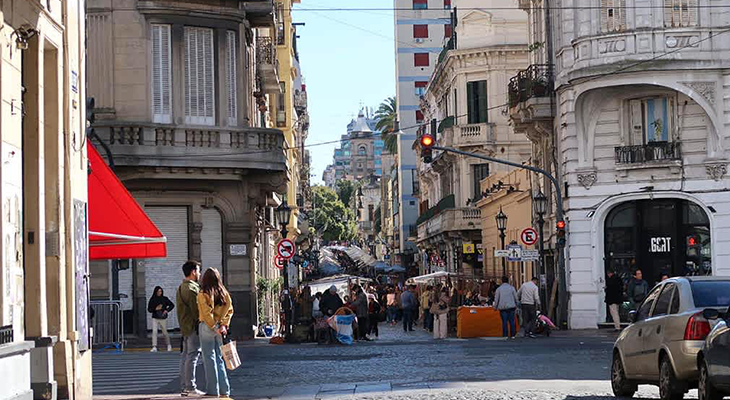
South America beckons adventurous travelers with its stunning diversity – from the glacial peaks of Patagonia to the vibrant streets of Buenos Aires, from ancient Incan ruins to pristine Amazon rainforests. Yet despite its magnetic appeal, many travelers hesitate, wondering about safety in a region often portrayed as challenging for tourists.
The reality is far more nuanced and encouraging than many realize. While certain areas require extra caution, safest places to travel in South America include world-class destinations that rival European cities for security and infrastructure. Countries like Argentina, Uruguay, and Chile consistently rank among the globe's most peaceful nations, offering travelers incredible experiences with minimal risk.
This comprehensive guide cuts through misconceptions and media sensationalism to reveal the true safety landscape of South America in 2025. You'll discover which countries and cities offer the most secure travel experiences, learn essential safety strategies from seasoned travelers, and understand how to navigate potential risks while maximizing your adventure. Whether you're planning a solo backpacking journey, a family vacation, or a romantic getaway, this guide provides the practical insights you need to explore South America with confidence and peace of mind.
Table of Contents
- Understanding South America's Safety Landscape
- The Top 5 Safest Countries in South America
- Safest Cities for Urban Exploration
- Regional Safety Spotlights
- Essential Safety Strategies for South American Travel
- Seasonal Safety Considerations
- Budget Travel Safety Tips
- Technology and Communication for Safety
- Quick Takeaways
- Conclusion
- Frequently Asked Questions
Understanding South America's Safety Landscape
Global Peace Index Rankings Reveal the Truth
The 2024 Global Peace Index provides concrete data that challenges many preconceptions about South American safety. Argentina leads the continent with a score of 1.86, ranking 47th globally – safer than countries like France (55.3 crime index) and the United Kingdom (47.4 crime index). Uruguay follows closely at 1.89, while Chile rounds out the top three at 1.87.
These rankings consider factors including political stability, violent crime rates, and societal safety. Notably, Argentina, Paraguay, and Suriname hold Level 1 US State Department travel advisories – the same classification as popular destinations like Canada, Singapore, and many European countries. This official recognition contradicts the "dangerous South America" narrative often perpetuated in media.
The continent's safety varies dramatically by region and country. While Venezuela and parts of Colombia face significant challenges, the Southern Cone countries (Argentina, Chile, Uruguay) maintain safety standards comparable to developed nations. Understanding these nuances allows travelers to make informed decisions rather than avoiding an entire continent based on outdated stereotypes.
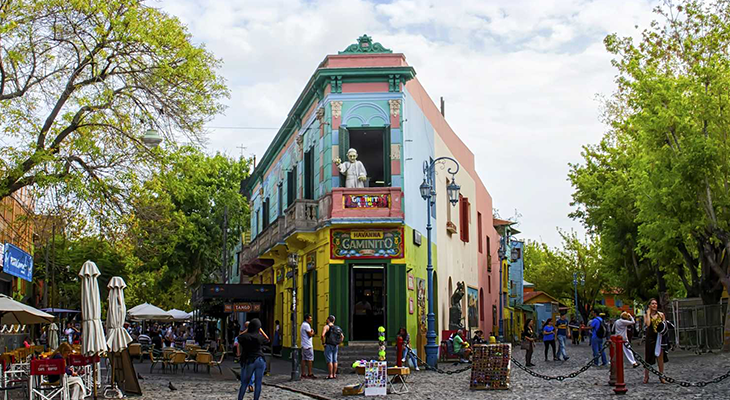
Colorful street scene in La Boca, Buenos Aires, showcasing a lively and tourist-friendly neighborhood with cafes and vibrant buildings
Crime Statistics vs. Traveler Reality
Raw crime statistics can be misleading for travelers. Brazil, despite having concerning overall crime rates, sees millions of safe tourist visits annually to destinations like Rio de Janeiro's Copacabana and São Paulo's cultural districts. The key lies in understanding where crime concentrates – typically in non-tourist favelas and peripheral urban areas that visitors rarely encounter.
Petty crime targeting tourists remains the primary concern across the continent, with pickpocketing, phone theft, and opportunistic robbery being more common than violent crime. Cities like Buenos Aires, Santiago, and Montevideo experience these issues similarly to major European capitals, requiring the same basic precautions.
Recent data shows that tourists following standard safety protocols experience crime rates well below local averages. This includes staying in established tourist areas, using official transportation, and avoiding displays of wealth – practices that reduce risk in any global destination.
The Top 5 Safest Countries in South America
1. Argentina: The Continental Leader
Argentina consistently ranks as the safest country in South America for travelers, combining political stability with excellent tourist infrastructure. The country's vast size means safety levels vary by region, but popular destinations like Buenos Aires's Palermo and Recoleta neighborhoods, Bariloche's lake district, and Mendoza's wine regions offer exceptional security.
Buenos Aires leads South American capitals for solo female travelers, particularly in upscale neighborhoods like Palermo Soho. The city's extensive subway system operates safely during daylight hours, while abundant taxi and rideshare options provide secure transportation. Street crime exists but concentrates in specific areas easily avoided by following local guidance.
Patagonia represents Argentina's safest region, with virtually no violent crime and only minor concerns about petty theft in tourist centers. Solo travelers regularly complete multi-week camping and hiking expeditions without incident, meeting fellow adventurers from around the world in hostels and hiking refuges.
The country's unique insight lies in its European immigration heritage, creating a culture that blends Latin American warmth with European safety consciousness. This manifests in well-maintained public spaces, reliable emergency services, and a tourism industry that prioritizes visitor safety.
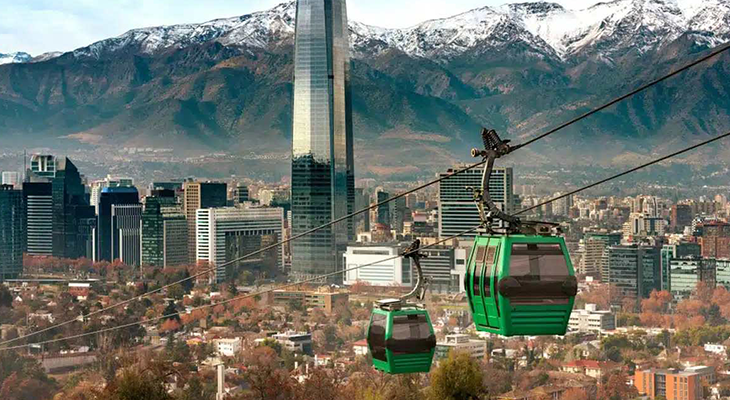
Santiago cityscape with the Gran Torre Santiago skyscraper and Andes mountains in the background, featuring cable cars as a tourist attraction
2. Uruguay: Small Country, Big Safety
Uruguay earns recognition as South America's most peaceful country per capita, with crime rates below many US states. Montevideo, the capital, feels more like a mid-sized European city than a typical Latin American metropolis, with tree-lined avenues, outdoor cafes, and late-night pedestrian activity that would seem risky elsewhere in the region.
Montevideo safest city South America searches consistently return the Uruguayan capital, supported by both statistical data and traveler testimonials. The city's Pocitos beach area bustles with families and joggers until late evening, while the historic Cuidad Vieja offers safe exploration during daylight hours.
Uruguay's safety extends beyond its capital. Beach towns like Punta del Este and Colonia del Sacramento welcome international visitors with minimal crime concerns. The country's stable democracy, high education levels, and relative wealth create an environment where tourism thrives safely.
Budget travelers find Uruguay more expensive than neighboring countries, but this economic stability contributes directly to its safety profile. Higher living standards correlate with lower crime rates, making Uruguay an ideal first South American destination for nervous travelers.
3. Chile: Diverse and Secure
Chile's unique geography – a narrow strip between the Pacific Ocean and Andes Mountains – concentrates population in safe, well-developed areas. Santiago ranks among South America's safest major cities, with efficient public transportation, reliable emergency services, and numerous secure neighborhoods for visitors.
The country's crown jewel for safety is Patagonia solo travel safety, where vast wilderness areas see virtually no crime beyond occasional equipment theft at popular campsites. Torres del Paine National Park hosts thousands of international trekkers annually, with park rangers maintaining security and well-marked trails ensuring safe navigation.
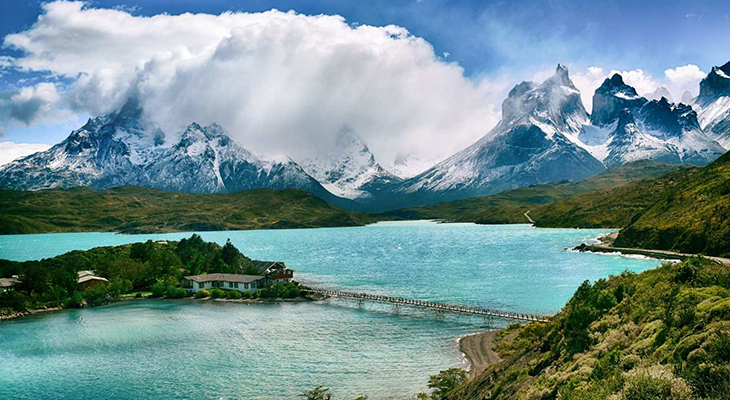
Panoramic view of Torres del Paine National Park with snow-capped peaks and turquoise glacial lakes in Patagonia
Northern Chile's Atacama Desert region offers another secure travel experience, with organized tour companies providing safe access to otherworldly landscapes. San Pedro de Atacama serves as a secure base for exploring salt flats, geysers, and stargazing sites that require guided access.
Chile's political stability since the 1990s has fostered economic development that supports safe tourism infrastructure. From Easter Island's remote beauty to the wine regions around Santiago, travelers find consistently high safety standards throughout the country.
4. Paraguay: Hidden Gem
Paraguay often gets overlooked in South American itineraries, but this landlocked country offers exceptional safety for adventurous travelers. With a Level 1 US State Department advisory and low violent crime rates, Paraguay provides authentic South American experiences without major safety concerns.
Asunción, Paraguay's capital, maintains small-city charm with big-city amenities. The historic center allows safe daytime exploration, while modern shopping districts like Villa Morra offer familiar comfort for international visitors. The city's compact size makes navigation simple and reduces opportunities for getting lost in unsafe areas.
The country's unique appeal lies in its indigenous Guaraní culture, preserved alongside Spanish colonial heritage. Rural areas remain exceptionally safe, allowing travelers to experience traditional communities and natural areas like the Pantanal wetlands with minimal security concerns.
Paraguay's safety advantage comes from its stable political system and strong family-oriented culture. Crime rates remain low partly because extended family networks provide social support systems that reduce desperation-driven crime common in other regions.
5. Peru: Conditional Safety
Peru requires more careful planning than the previous four countries but offers incredibly rewarding experiences for prepared travelers. Lima's Miraflores and Barranco districts provide secure bases for exploring the capital, while Cusco's tourist infrastructure ensures relatively safe access to Machu Picchu and Sacred Valley sites.
The key to Peru travel safety lies in route planning and timing. The tourist trail connecting Lima, Cusco, Arequipa, and major attractions maintains good security, with established accommodations and transportation options that prioritize visitor safety. Problems arise when travelers venture into remote areas without proper preparation or local guidance.
Sacred Valley safe travel is achievable through reputable tour operators who understand local conditions and maintain communication with authorities. Cities like Ollantaytambo and Pisac offer secure accommodation options and guided access to archaeological sites.
Peru's unique insight involves understanding altitude safety alongside personal security. Many safety incidents involve altitude sickness or hiking accidents rather than crime, making proper acclimatization and physical preparation as important as traditional security measures.
Safest Cities for Urban Exploration
Montevideo: South America's Safest Capital
Montevideo consistently tops safety rankings for South American capitals, combining European-style infrastructure with Latin American warmth. The city's Ciudad Vieja (Old City) remains walkable during daylight hours, while modern neighborhoods like Pocitos and Carrasco offer beach access with urban amenities.
Solo female travelers rate Montevideo highest among regional capitals for comfort and security. The city's compact size allows easy navigation, while extensive bus networks provide safe public transportation. Late-night activity centers around established entertainment districts with visible security presence.
The city's safety stems from Uruguay's stable institutions and middle-class population. Unlike other regional capitals where extreme inequality creates dangerous contrasts, Montevideo's relatively even wealth distribution reduces desperation-driven crime that targets tourists.
Santiago: Mountain-Backed Security
Santiago leverages its mountain setting and modern infrastructure to create one of South America's most secure major cities. The Las Condes and Providencia neighborhoods offer international-standard safety with shopping centers, restaurants, and accommodations that meet global security expectations.
Public transportation safety in Santiago exceeds most other regional capitals. The modern Metro system operates cleanly and securely, while abundant taxi and rideshare options provide safe door-to-door transportation. Street crime exists but concentrates in specific areas that tourists can easily avoid.
Santiago's unique advantage lies in its proximity to both mountains and coast, allowing safe day trips to ski resorts, beaches, and wine regions. This geographic diversity means travelers can experience multiple environments while maintaining a secure home base.
Buenos Aires: Neighborhood by Neighborhood Safety
Buenos Aires requires neighborhood-specific knowledge for safe exploration. Palermo, Recoleta, and Belgrano offer European-level safety with tree-lined streets, outdoor dining, and active nightlife that functions securely until late hours. These areas concentrate most tourist accommodations and attractions.
Avoiding Buenos Aires dangerous areas primarily means staying away from southern neighborhoods like La Boca outside tourist zones and peripheral suburbs. The city center (Microcentro) remains safe during business hours but becomes less secure in the evening.
The city's extensive taxi and rideshare networks provide safe transportation between neighborhoods, eliminating the need to walk through transitional areas. Buenos Aires neighborhoods for tourists cluster in the north, making it easy to maintain security while experiencing the city's cultural offerings.
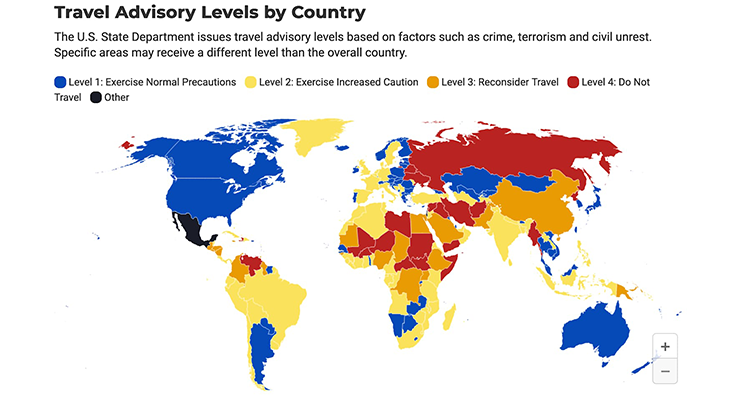
World map showing U.S. State Department travel advisory levels by country as of October 2023, color-coded by safety levels from normal precautions to do not travel
Regional Safety Spotlights
Patagonia: World-Class Wilderness Safety
Patagonia represents one of the world's safest adventure travel destinations, spanning both Argentina and Chile. Patagonia solo travel safety exceeds that of many developed countries, with violent crime virtually nonexistent and petty theft limited to occasional equipment theft at popular camping areas.
The region's safety infrastructure includes well-trained park rangers, established hiking refuges, and reliable communication systems in most areas. Torres del Paine and Los Glaciares National Parks maintain international safety standards with marked trails, emergency services, and weather monitoring that prevents most accidents.
Budget travelers find Patagonia's safety allows for economical adventures like camping and hitchhiking that would be risky elsewhere in South America. Solo female travelers regularly complete major treks like the "W" circuit or Fitz Roy approach with only standard precautions required.
Wine Regions: Secure Culinary Adventures
South America's wine regions combine excellent safety records with world-class experiences. Mendoza, Argentina, and Casablanca Valley, Chile offer secure base cities with easy access to vineyards, restaurants, and outdoor activities that maintain consistently high safety standards.
These regions benefit from tourism-dependent economies that prioritize visitor security. Organized wine tours operate with professional standards, while independent travelers find well-marked routes between vineyards and secure accommodations throughout the areas.
Wine region safety extends to rural areas where small-town communities welcome visitors and maintain low crime rates. This allows for authentic experiences like staying in family-run hostels or participating in harvest activities that would be risky in other rural areas.
Essential Safety Strategies for South American Travel
Pre-Travel Preparation That Saves Lives
South America travel insurance requirements vary by country, but comprehensive coverage becomes essential given the continent's remote areas and varying medical facilities. Policies should include medical evacuation coverage, given that serious injuries in places like Patagonia may require helicopter transport to major cities.
Research becomes crucial for safe South American travel. Understanding which neighborhoods to avoid, current political situations, and seasonal weather patterns prevents most safety incidents. Government travel advisories provide baseline information, but recent traveler reports on forums offer more nuanced, current insights.
Language preparation, particularly basic Spanish, significantly improves safety by enabling communication during emergencies and reducing vulnerability to scams that target non-Spanish speakers. Simple phrases for requesting help or directions can prove invaluable during unexpected situations.
Money Management and Theft Prevention
Budget travel South America safety requires specific financial strategies. Using multiple payment methods (cards, cash, mobile payments) and storing them separately reduces total loss risk. Many countries now accept contactless payments, reducing the need to display cash or valuable cards.
ATM safety follows universal rules but requires extra vigilance in South America. Using machines inside banks or shopping centers rather than street-side locations reduces theft risk, while covering PIN entry prevents observation by potential criminals.
Avoiding display of valuables means more than hiding jewelry or electronics. Expensive hiking gear, brand-name clothing, and even guidebooks can mark travelers as targets. Dressing like locals and using worn-looking equipment reduces unwanted attention.
Transportation Security Protocols
Public transportation safety varies dramatically between countries and cities. Buenos Aires and Santiago metros operate with European-level security, while bus systems in smaller cities may require more caution. Researching specific routes and timing helps avoid problems.
Long-distance bus travel in South America generally operates safely, but choosing reputable companies matters significantly. Premium operators like Cruz del Sur in Peru or Andesmar in Argentina maintain better safety records than budget alternatives, with GPS tracking and professional drivers.
Ride-sharing apps now operate in major South American cities, providing safer alternatives to street taxis. Uber, Cabify, and local alternatives offer verified drivers and trip tracking that improves security for solo travelers, particularly women traveling at night.
Seasonal Safety Considerations
Weather-Related Safety Timing
Best time to visit South America safely varies by region but generally favors shoulder seasons (March-May, September-November) when weather conditions remain stable and tourist crowds stay manageable. Extreme weather events like flooding or storms can create safety hazards that overwhelm local emergency services.
Summer travel (December-February) in southern regions brings crowds that can stress infrastructure and increase petty crime opportunities. However, this timing remains safest for Patagonian adventures when weather conditions allow access to remote areas that become dangerous during winter.
Rainy season travel requires additional preparation in tropical areas. Roads may become impassable, increasing isolation risks, while flood conditions can overwhelm sewage systems, creating health hazards in urban areas.
Political and Social Event Awareness
South American countries occasionally experience protests, strikes, or political events that can disrupt travel. Monitoring local news and embassy alerts helps travelers avoid areas during tense periods, while flexible itineraries allow route changes when necessary.
Holiday periods like Carnaval or national celebrations can increase both safety and risk simultaneously. While generally festive and welcoming to tourists, large crowds and increased alcohol consumption can lead to accidents or opportunistic crime.
Election periods sometimes bring temporary restrictions or demonstrations. Understanding local political calendars helps travelers avoid inadvertent involvement in sensitive situations that could compromise safety.
Budget Travel Safety Tips
Affordable Accommodation Security
Backpacking South America safely requires careful hostel selection. Established hostel chains like HI (Hostelling International) or highly-rated independent hostels provide security features like lockers, 24-hour reception, and secure Wi-Fi that protect both persons and possessions.
Budget travelers should prioritize security over minor cost savings. Spending extra for accommodations in safe neighborhoods eliminates many risks and often provides better value through reduced transportation costs and safer walking access to attractions.
Couchsurfing and home-sharing require extra precaution in South America. While many positive experiences occur, the lack of commercial accountability means thorough vetting of hosts becomes essential for safety.
Street Food and Health Safety
South America offers incredible culinary experiences at budget prices, but food safety requires attention. Following the "cook it, peel it, or forget it" rule prevents most foodborne illnesses that can derail trips. Busy food stalls with high turnover generally offer safer options than places where food sits idle.
Water safety varies significantly between countries and regions. Bottled water remains the safest choice, while water purification tablets provide backup for remote areas. Ice cubes and fresh produce washed in local water can cause problems even when the water source seems clean.
Street vendors in tourist areas generally maintain higher safety standards than those serving primarily locals, as their businesses depend on positive tourist experiences. However, observing preparation methods and trusting instincts about cleanliness remains important.
Technology and Communication for Safety
Digital Security and Connectivity
Reliable communication becomes essential for safety in South America's remote areas. International phone plans, local SIM cards, or portable Wi-Fi devices ensure ability to contact help during emergencies. Satellite communicators like Garmin inReach provide backup communication for serious outdoor adventures.
Digital security requires attention given the prevalence of phone theft. Cloud backup for important documents, photos, and contact information prevents total loss, while password protection and remote wipe capabilities limit damage from theft.
GPS navigation and offline maps prevent dangerous situations caused by getting lost. Downloading maps before traveling to areas with poor connectivity ensures navigation capability even without internet access.
Emergency Contact Protocols
Establishing check-in protocols with family or friends provides safety nets for solo travelers. Regular communication schedules help ensure that disappearances get noticed quickly, while emergency contact information should include both home country and local contacts.
Embassy registration programs like the US State Department's STEP provide official channels for assistance during emergencies. These services can provide evacuation assistance, emergency loans, or communication with family during crises.
Local emergency numbers differ between countries, but many South American nations now use 911 systems similar to North America. Researching specific emergency numbers and keeping them easily accessible can save crucial time during actual emergencies.
Quick Takeaways
- Argentina, Uruguay, and Chile rank as South America's safest countries with Global Peace Index scores comparable to European nations and Level 1-2 US travel advisories
- Patagonia represents one of the world's safest adventure travel destinations with virtually no violent crime and excellent infrastructure for solo travelers, including women
- Major cities like Montevideo, Santiago, and Buenos Aires offer secure urban experiences when travelers stay in established tourist neighborhoods and follow basic precautions
- Petty crime (pickpocketing, phone theft) poses the primary risk rather than violent crime, making standard travel precautions highly effective for risk reduction
- Comprehensive travel insurance with medical evacuation coverage is essential due to remote areas and varying medical facility quality across the continent
- Spanish language basics significantly improve safety by enabling emergency communication and reducing vulnerability to tourist-targeting scams
- Seasonal timing affects safety considerably with shoulder seasons (March-May, September-November) offering optimal weather conditions and manageable tourist crowds
Conclusion
South America's safety landscape in 2025 offers tremendous opportunities for travelers willing to approach the continent with proper preparation and realistic expectations. The data clearly shows that countries like Argentina, Uruguay, and Chile provide security levels comparable to popular European destinations, while even countries requiring more caution offer incredible experiences for well-informed travelers.
The key lies in moving beyond sensationalized media portrayals to understand the nuanced reality of South American travel. By focusing on established tourist infrastructure, following time-tested safety protocols, and choosing destinations that match your experience level and risk tolerance, you can safely explore some of the world's most spectacular landscapes and vibrant cultures.
Remember that millions of international travelers visit South America annually without incident, armed with nothing more than common sense and basic precautions. The continent's tourism industry has evolved significantly over the past decade, with improved infrastructure, better emergency services, and enhanced communication systems that support safe travel experiences.
Ready to start planning your South American adventure? Begin with one of the safer countries like Argentina or Chile to build confidence and experience. Connect with fellow travelers through platforms like Trespot to share insights, find travel companions, and access real-time safety information from people currently on the ground. Your South American journey awaits – and with proper preparation, it can be both safe and transformational.
Frequently Asked Questions
Which is the safest country in South America for first-time visitors?
Argentina consistently ranks as the safest South American country, with a Global Peace Index score of 1.86 and Level 1 US travel advisory. Buenos Aires offers familiar urban amenities while Patagonia provides world-class outdoor adventures with excellent safety records. First-time visitors to South America find Argentina's European heritage and well-developed tourist infrastructure particularly welcoming.
Is solo female travel safe in South America?
Solo female travel South America safe destinations include Uruguay, Chile, and Argentina, where women regularly travel independently with standard precautions. Cities like Montevideo and Santiago receive consistently positive reviews from solo female travelers. Patagonia especially welcomes solo women trekkers, with established refuges and active international traveler communities providing natural safety networks.
What's the safest way to handle money while traveling in South America?
Use multiple payment methods stored separately – contactless cards, mobile payments, and moderate cash amounts. ATMs inside banks or shopping centers offer better security than street locations. South America travel budget safety improves by avoiding displays of wealth and using established businesses that accept card payments rather than cash-only transactions.
When is the best time to visit South America for optimal safety?
Best time to visit South America safely falls during shoulder seasons (March-May, September-November) when weather remains stable and crowds manageable. Summer (December-February) works best for Patagonia adventures, while avoiding rainy seasons reduces transportation risks in tropical areas. Political stability typically remains consistent year-round in safer countries.
Do I need special travel insurance for South America?
Comprehensive travel insurance with medical evacuation coverage becomes essential for South American travel. South America travel insurance requirements should include minimum $100,000 medical coverage, emergency evacuation, and trip cancellation protection. Remote areas like Patagonia may require helicopter evacuation to reach adequate medical facilities, making this coverage potentially life-saving.
Share Your South America Safety Experiences!
Have you discovered hidden safe gems or learned valuable safety lessons during your South American travels? The travel community benefits enormously when experienced explorers share practical insights about navigating this incredible continent safely.
What's been your biggest surprise about safety levels in South America compared to your expectations before traveling? Perhaps you found a city safer than anticipated, or discovered safety strategies that work particularly well in specific regions? Your real-world experiences help fellow travelers make informed decisions and build confidence for their own adventures.
Share this guide with friends planning South American trips – every traveler deserves accurate, current information to explore safely! Tag us with your safety success stories and help build a community of informed, responsible travelers exploring South America's wonders.
References
- Global Peace Index 2024 - Institute for Economics & Peace - Comprehensive analysis of peace and safety indicators across 163 countries including detailed South American rankings.
- U.S. State Department Travel Advisories - Official government assessments of travel safety levels for all South American countries updated regularly based on current conditions.
- World Population Review - Safest Countries in South America 2025 - Statistical comparison of crime indices and safety ratings across South American countries with updated 2025 data.
- The Lady Who Travels - 10 Safest Places to Travel in South America (2025) - Traveler-focused analysis of safe destinations based on first-hand experience and current conditions.
- Offshore Freedom - Safest Countries in South America: Your Ultimate Guide - Investment and expatriate perspective on long-term safety considerations for South American countries.


